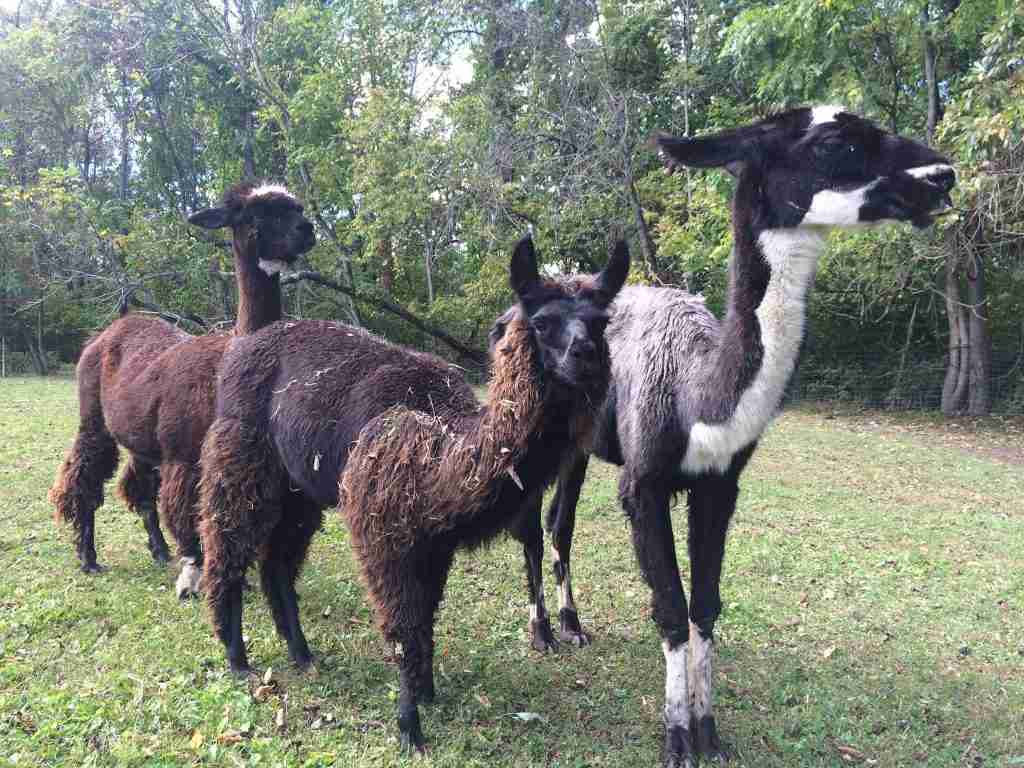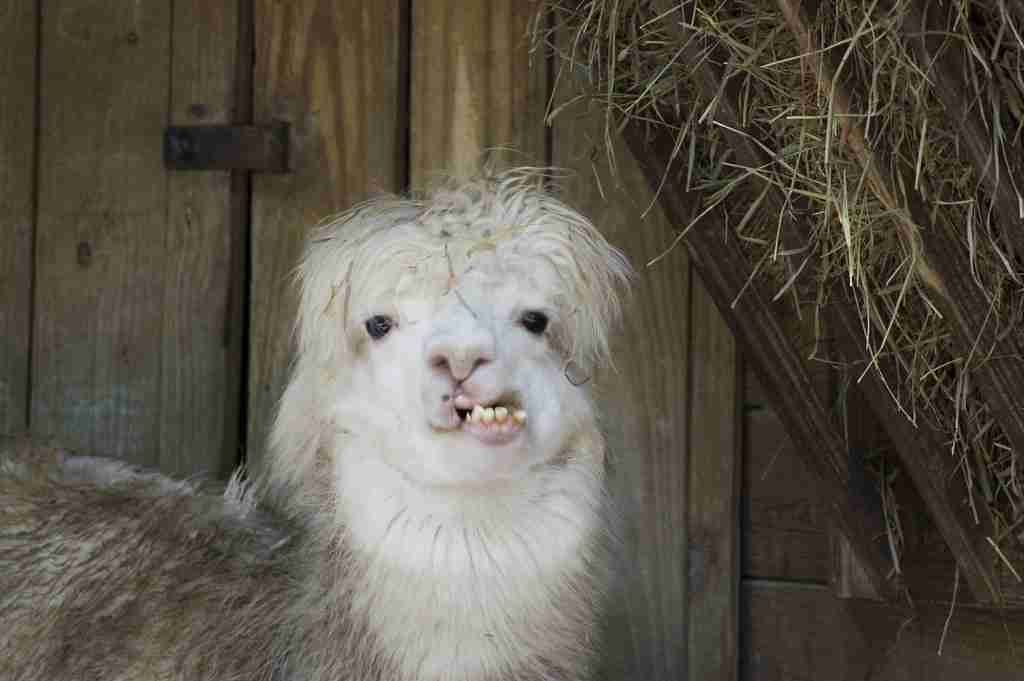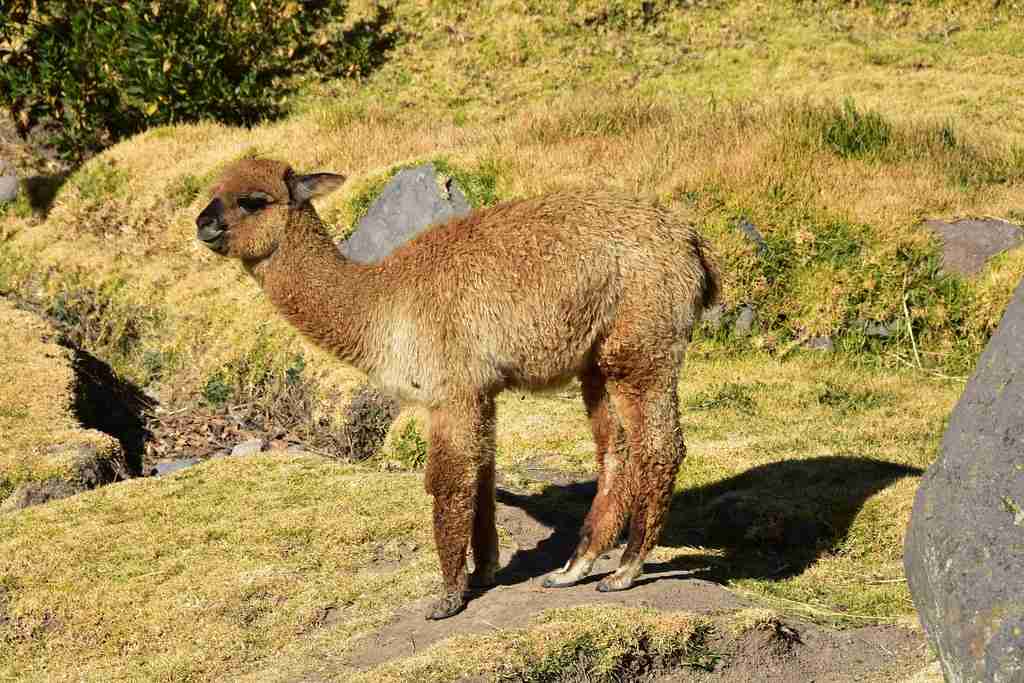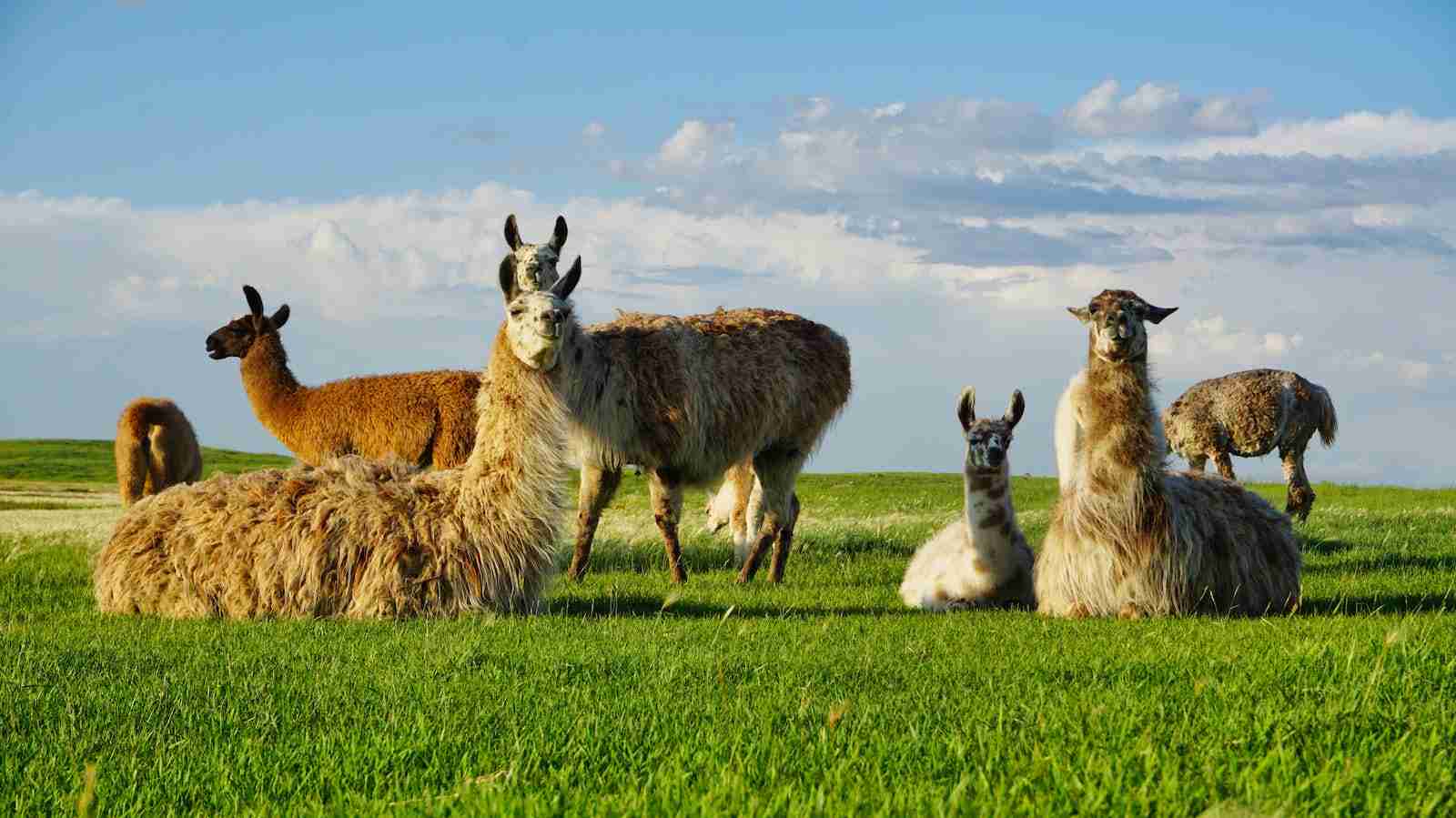22 Fun Facts About Alpacas | Fluffy Highland Grazers
1. Alpacas were domesticated over 6,000 years ago by the Incas.
Alpacas, first domesticated by the Incas over 6,000 years ago, are descendants of camelids that arrived in South America around 2.5 million years ago. Prized for their luxurious fleece, Alpacas were a symbol of wealth and status in ancient Incan society.
Originating from Peru’s humid Puna region, they served as vital companions, providing clothing, food, and fuel in the highlands of Peru, Chile, and Bolivia.
2. There are two breeds of Alpacas: Huacaya and Suri.
Alpacas come in two breeds: Huacaya and Suri. Huacayas, the more common type, have soft, fluffy, crimped fleece and are known for their friendly nature, weighing between 120 and 200 pounds.
Suris, with long, silky, less crimped locks, are rarer and more reserved, weighing 150 to 250 pounds. Each breed’s unique fiber suits different textile purposes, from knitting to spinning.
3. Alpacas are one of the smallest members of the Camel family.
Alpacas, the smallest domesticated members of the Camel family, typically weigh between 100 to 200 pounds and measure 3 feet in height at the shoulder, extending 4-7 feet in length.
Their body length ranges from 47 to 85 inches, with a tail length of 6 to 10 inches. Closely related to the Vicuña, alpacas are adorable cousins of Camels and llamas.
4. Alpacas and llamas can interbreed, producing a Huarizo.

Alpacas and llamas can successfully interbreed, creating a hybrid known as a Huarizo, typically born from a male llama and a female Alpaca. Another hybrid, the Misti, results from a male alpaca and a female llama.
Huarizos are generally smaller than llamas, with longer fiber. Both species, being pseudo-ruminants with three stomachs, can produce fertile offspring across these hybrids.
5. There are no wild Alpacas.
Alpacas, having been domesticated for thousands of years, do not exist in the wild. They are descendants of the vicuña, their wild ancestor, domesticated by ancient Andean tribes.
While their relatives, llamas and guanacos, have wild counterparts in the Andes Mountains, Alpacas are solely domesticated animals, with no known wild populations, distinguishing them from their South American camelid relatives.
6. Alpacas are bred primarily for their fleece.
Alpacas are primarily bred for their luxurious fleece, sheared annually in spring, yielding 5 to 10 pounds per animal. Their fiber, akin to cashmere, is renowned for its fineness, softness, and excellent thermal qualities.
Used for creating yarn, apparel, tapestries, and blankets, alpaca fleece is globally valued for its lightweight and durable nature, making it a sought-after material similar to sheep’s wool.
7. Alpaca meat is considered a luxury in Peru.
In Peru, particularly in the Andean regions and the gastronomic city of Cusco, Alpaca meat is a luxury food, highly regarded for its rich protein content and low fat.
Popular on many restaurant menus, it shares similarities with llama meat in taste and nutritional value. Historically used for meat by the Spaniards, Alpaca meat remains an integral part of South America’s economy and culinary culture.
8. Alpacas have no front teeth at the top of their mouths.

Alpacas possess a unique dental structure; they have six constantly growing incisors in their lower jaw but no front teeth in the upper jaw, relying instead on a hard upper palate.
This design efficiently aids in feeding, as they grasp and tear grass against this dental pad. Their incisors, essential for grazing, are periodically replaced throughout their lifetime, maintaining effective feeding ability.
9. Alpacas are modified ruminants with a three-chambered stomach.
Alpacas, unlike true ruminants like cows and goats that have four stomach chambers, are modified ruminants known as pseudoruminants. They possess a unique three-chambered stomach comprising the C-1, C-2, and C-3 compartments.
This specialized digestive system, shared with all camelids, includes the rumen, omasum, and abomasum, efficiently processing their diet but not analogous to the stomachs of true ruminants.
10. Alpacas can die of loneliness.
Alpacas, inherently social and herd-oriented animals, can suffer severely from loneliness, potentially leading to illness and even death. They thrive on companionship, requiring the presence of at least two or ideally three fellow Alpacas for optimal well-being.
Keeping them in same-sex groups enhances their happiness, as isolation can result in low mood, poor eating habits, and health issues due to their strong herd instincts.
11. Two black Alpacas can produce a white Alpaca baby.
Alpaca coat color genetics are complex, and influenced by multiple genes, including AslP and MCIR, responsible for base colors. Despite their rarity, two black Alpacas can surprisingly produce a white cria, just as two white Alpacas might have a black offspring.
Alpacas exhibit a diverse color range, spanning 22 shades from deep blue-black to white, showcasing the unpredictability in their coat color inheritance.
12. Alpacas poop in one spot, helping to keep their area clean.
Alpacas exhibit a unique cleanliness habit by using communal dung piles, a trait that helps maintain a tidy environment in their paddocks. They naturally gravitate to specific spots for defecation, effectively concentrating their waste in just a few areas.
This behavior not only simplifies cleanup but also turns their manure, known as ‘Alpaca gold,’ into a valuable, nutrient-rich resource for gardeners, enhancing soil and plant health.
13. Alpacas were nearly wiped out by the Spanish in the 16th century.
In the 16th century, following the Spanish conquest in 1532, Peru’s Alpaca population faced near extinction. The arrival of European livestock, including Merino sheep, introduced diseases like mange and disrupted native habitats.
This, coupled with being slaughtered for food, led to a drastic decline in Alpaca numbers, with an estimated 98% of the population wiped out, significantly impacting their presence in the Andes.
14. Artificial insemination is rarely successful in Alpacas.
Artificial insemination in alpacas is challenging due to their unique reproductive system, where females ovulate only after mating, unlike other livestock.
This leads to low success rates in artificial insemination, with studies showing as few as 1 in 42 Alpacas successfully giving birth through this method. Traditional mating and embryo implantation are more effective alternatives for breeding these animals.
15. The average lifespan of an Alpaca is 15-20 years.
In the United States, well-cared-for alpacas have an average lifespan of 15-20 years, longer than their Andean counterparts. In their native Andes, alpacas often live shorter lives due to terminal market use when fiber quality declines around 8-10 years.
In Peru, they’re utilized for fiber, hides, and meat, facing harsher conditions. The oldest recorded Alpaca lived up to 27 years.
16. National Alpaca Farm Days fall on September’s final weekend annually.
Annually on September’s final weekend, National Alpaca Farm Days celebrate these unique animals, inviting the public to explore Alpaca farms across North America.
Initiated in 1997, this event honors the Alpaca’s contributions and rich history, rooted in the Andes Mountains of South America, where they have been a vital part of indigenous herding practices for centuries.
17. Alpacas support community safety with alarm calls.
Alpacas exhibit a strong sense of community safety through their unique alarm calls. When one Alpaca perceives danger, it emits a high-pitched, staccato alarm call, prompting the rest of the herd to follow suit.
This collective screeching response ensures that the entire herd is alerted and moves together to protect each other from potential threats, demonstrating their cohesive and protective nature.
18. Alpacas rarely spit at humans unless threatened or mistreated.
Alpacas, known for their generally calm demeanor, rarely spit at humans, reserving this behavior for moments of extreme threat or mistreatment. Approaching Alpacas with calmness and respect is essential to avoid such defensive reactions.
While spitting is a common form of communication among alpacas to express dominance or discomfort, it’s unusual for them to direct it at people unless feeling cornered or provoked.
19. Alpacas are intelligent and can be trained using clicker techniques.
Alpacas, known for their intelligence, respond well to calm, patient training, often using clicker techniques similar to those for dogs and horses. Training involves desensitization through repeated actions, requiring multiple short sessions.
While some alpacas learn faster than others, they generally adapt quickly to haltering and leading, using body posture, tail and ear movements, and various sounds to communicate effectively.
20. A baby Alpaca is called a Cria.

A baby alpaca, known as a Cria, is born after an 11.5-month gestation period, weighing about 18 to 20 pounds. This term is also used for baby llamas and Vicuñas. Remarkably, crias can stand shortly after birth, showcasing their resilience.
Alpaca mothers ensure their newborns are dry, upright, and fed before temperatures drop, with adult Alpacas eventually reaching up to 70 kg.
21. Alpaca wool is hypoallergenic and doesn’t contain lanolin.
Alpaca wool, celebrated for its exceptional qualities, is hypoallergenic due to the absence of lanolin, making it ideal for allergy sufferers. This exquisite fleece is not only incredibly soft and lightweight but also flame and water-resistant.
Alpaca fiber’s hypoallergenic nature ensures minimal risk of skin irritation, while its water resistance offers warmth and lightness superior to traditional wool, especially in cool, damp climates.
22. Alpacas can be therapeutic animals.
Alpacas, known for their calm and gentle nature, are gaining popularity as therapy animals. Interacting with them offers numerous mental health benefits, including stress and anxiety reduction, improved morale, emotional well-being, and a sense of tranquility.
Their therapeutic presence is increasingly welcomed in hospitals, universities, and retirement homes, where they help people relax and feel a sense of well-being through simple interactions.
FAQs
Alpacas are generally safe and not dangerous to humans, with their most severe reactions being spitting or a mild kick. Aggressive behavior is rare and often due to excessive human interaction. They coexist peacefully with other farm animals.
Alpacas are herbivores, primarily grazing on grass, their main diet component. They can also consume quality hay, grains, and roughage like leaves, wood, and bark, efficiently digested with their three-chambered stomach, similar to cattle and sheep.
Alpacas and llamas spit mainly for communication and defense. Females spit to reject male advances, while both genders use it to protect their food or warn off aggressors, and males may spit during fights for females.
To train an alpaca, first confine them in an enclosed area. Approach quietly from the left, headcollar on your arm. Gently place your right hand on their rear to encourage stillness, but beware of kicking.
To train an alpaca, first confine them in an enclosed area. Approach quietly from the left, headcollar on your arm. Gently place your right hand on their rear to encourage stillness, but beware of kicking.







